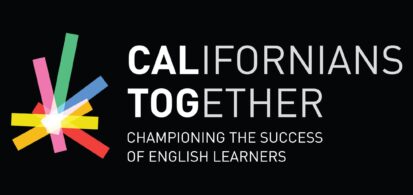By Jorge Cuevas-Antillón, San Diego County Office of Education
Assumptions about distance learning as a means for learning need tempering, per the reality of inequities that exist across the country and within Californian communities. Even before the pandemic forced schooling at home, about one in seven students did not have a high speed internet connection. In the state’s suburban and urban high poverty neighborhoods and in most rural areas, distance learning is either unreliable, at times inaccessible, or even completely impossible for far too many families.
Due to the confluence of poverty and language learner status, often English learner students find themselves outside the loop of educational support offered by schools and districts during the COVID-19 crisis. Even within the same zip code or neighborhood otherwise showing a high percentage of distance learning participation, English learners may have dropped out of the monitoring of their schools, especially students who are additionally homeless. Consequently, teachers and administrators should take steps to ensure more equity among families which may have less access to resources for distance learning.
Social/Emotional/Familial Support
- Call often to offer listening and caring
- To maintain privacy with your number, Google Voice may be an option: https://voice.google.com/u/0/about
- Refer families to low cost or sometimes free (family-safe) internet options and computers, such as Internet for All Now and Computers for Classrooms
- If it comes up, share phone numbers and physical addresses of organizations offering resources for:
- Modest financial support for undocumented families, such as this one in San Diego and this one in other parts of California.
- Immigrant and refugee assistance, such as this guide from the State of California, this one from the California Department of Public Health and this guide about Public Charge from Protecting Immigrant Families.
- Meals and food pantry distribution location, such as this one.
- Check in with your local district office or county office of education for other referral information for families in crisis, such as this guide from CDE, this and this resource from San Diego County Office of Education.
Distance Learning Access Support
- Map out wifi hotspots but recognize the viability and limitation of them
- Consider tapping WhatsApp for lessons, such as using recorded audio to teach vocabulary
- Create transcripts of otherwise video-only content, such as utilizing Google Docs “Voice Typing” to record, enabling student audio access and transcript reading access, rather than replying on video
- Build around content available from public television stations or local newspapers, or partner with them to develop ideas, like vocabulary bingo or articles for the day
- Tap DVDs, where such resources still exist, or sound recording technology along with audio playing devices can be sent home, perhaps wrapped around books and articles
Create Low Tech/No Tech Lessons
- Reply on a smartphone, but at a time which makes sense to support the family schedule
- If the only access is the conventional phone, ensure packets of materials sent home and books can clearly be referred to and found, with pagination, clear labeling, color, etc.
- If even phone access is intermittent, consider using postal mail with self-addressed postage-enabled envelopes for returning assignments and creative tasks
- Develop “Take Home Learning Boxes” with hands-on activities for craft creations with clay, glue sticks and other materials for creative designs, adding simple instructions and a photo or illustration as a model, encouraging students to draw or send a photo of their final product
- Encourage students and families to engage in language activities at home with resources such as:
- ELD Activities for Language Practice at Home
- Units of Student for Interactive Home learning
- Alas y Voz
- Print and distribute free use books with accompanying conversational questions for families with someone at home who can read in Spanish or English with the students at websites such as:
To explore the sources of many of these ideas and other similar recommendations, visit:
